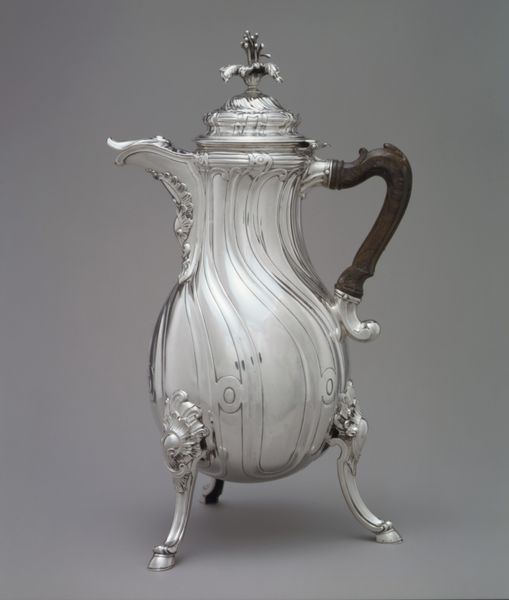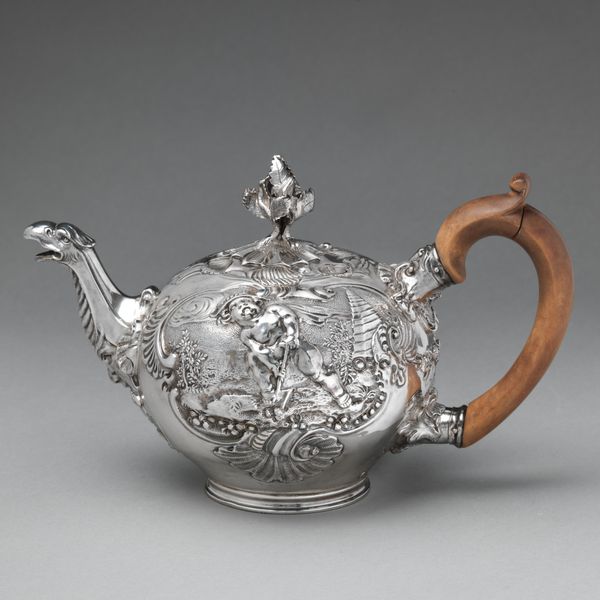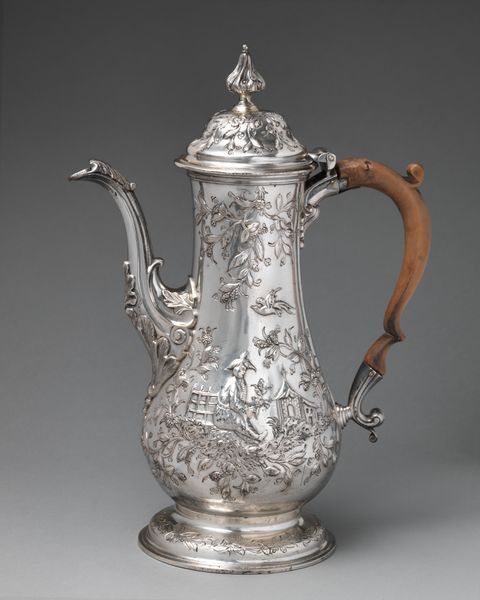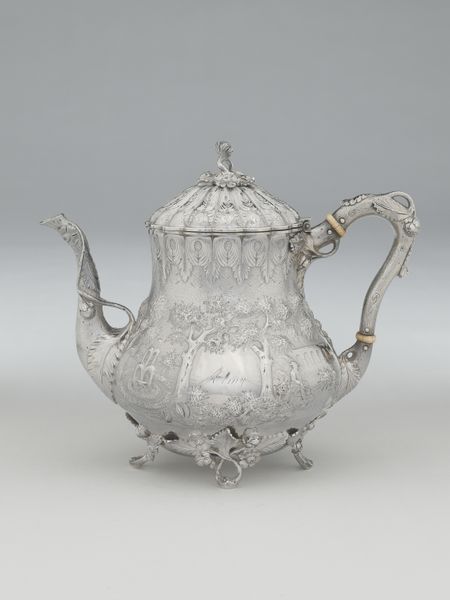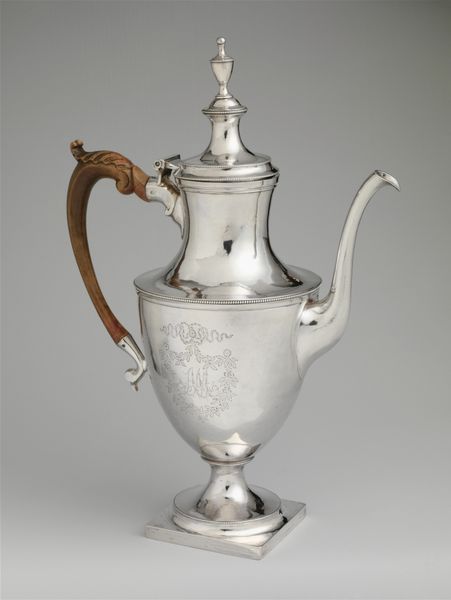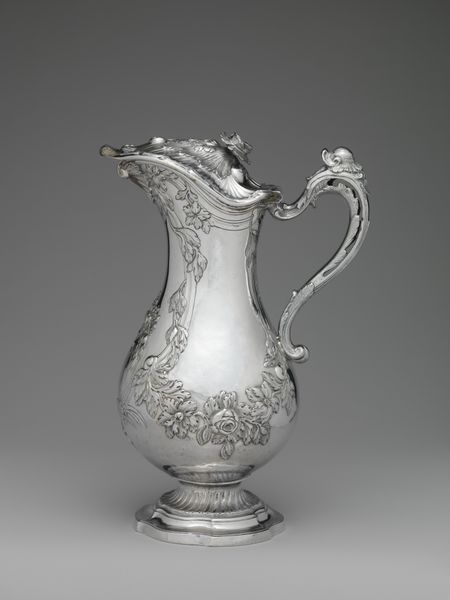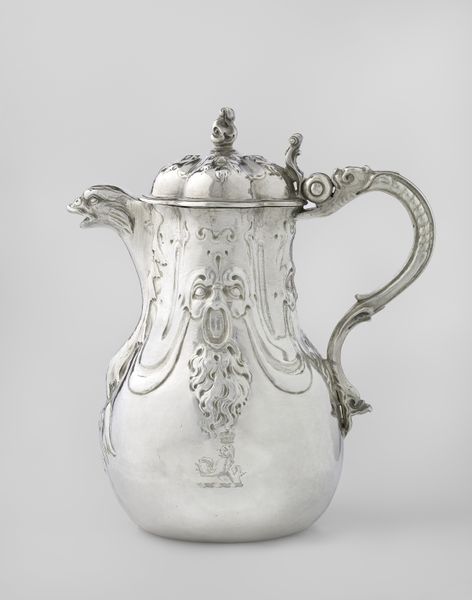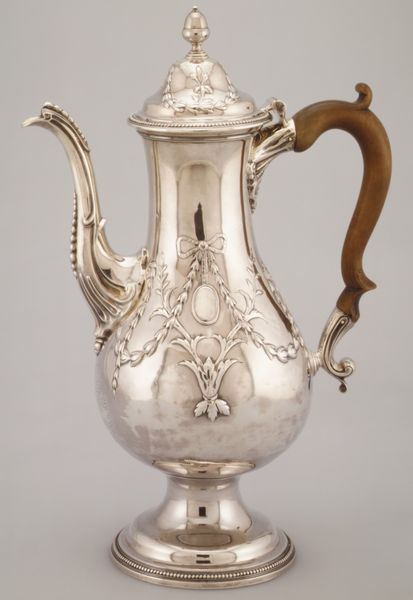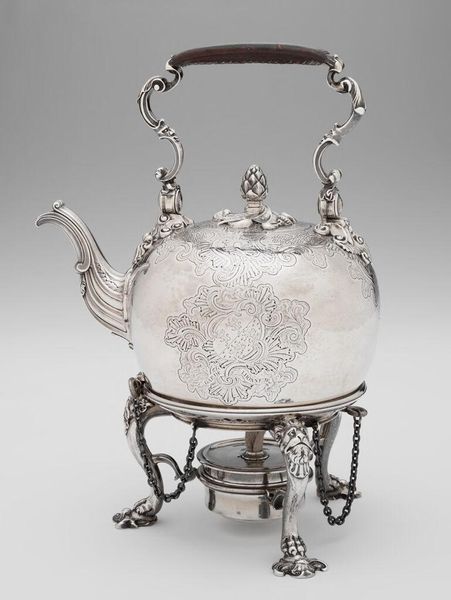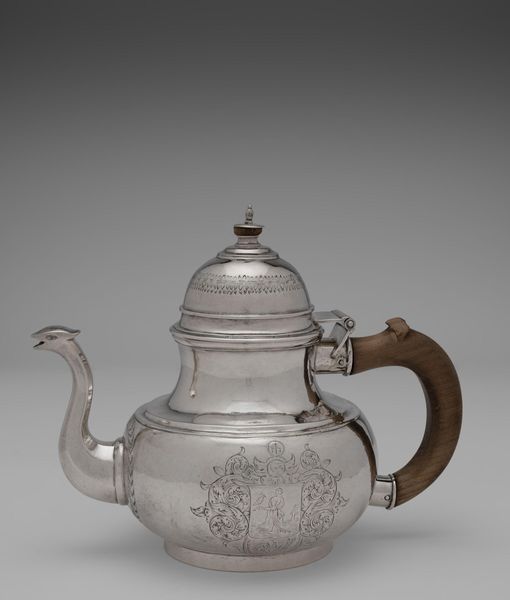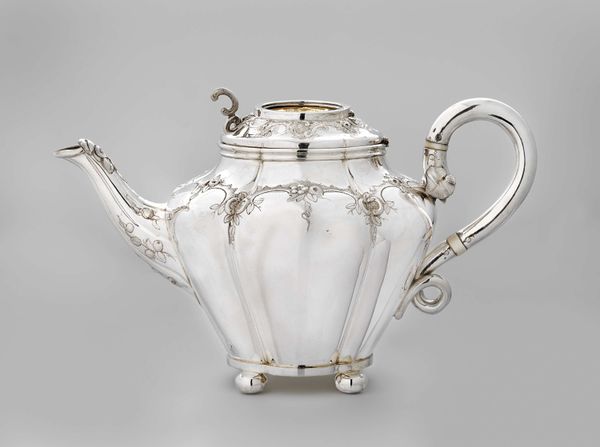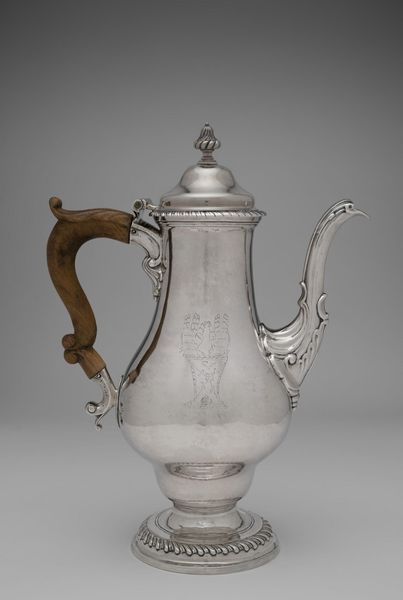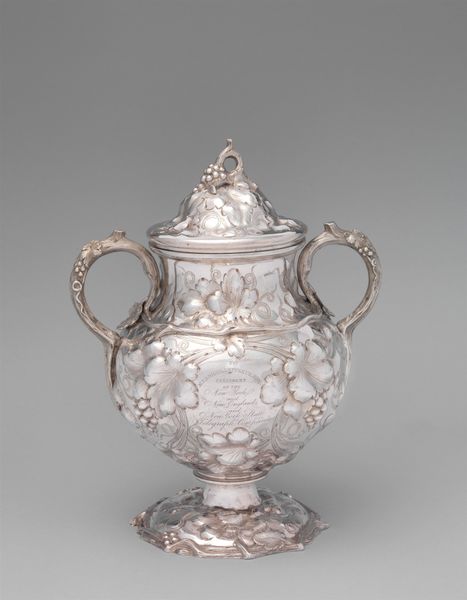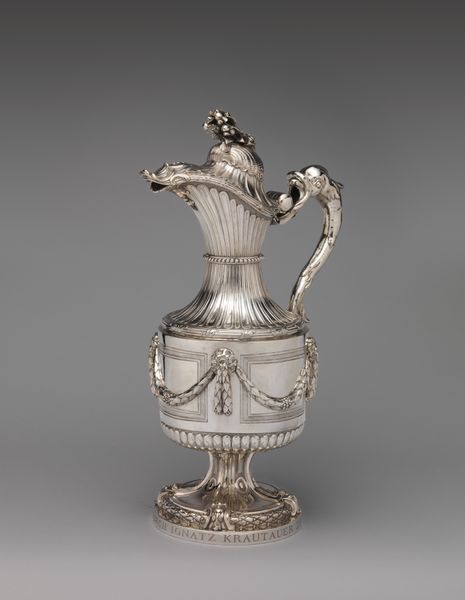
silver, sculpture
#
silver
#
baroque
#
flower
#
sculpture
#
decorative-art
Dimensions: Height: 9 3/4 in. (24.8 cm)
Copyright: Public Domain
Curator: Here we have Paul de Lamerie's "Coffeepot," crafted between 1737 and 1738. It resides here at the Metropolitan Museum of Art. Editor: Wow, that silver just gleams! It's an incredibly elaborate thing, all flowing lines and ornate details. It gives me an overwhelming sense of luxury and a kind of… playful indulgence. Curator: Exactly. This piece exemplifies Baroque decorative art, a style embraced by the elite. Think about the social context: coffee was an exotic, expensive commodity. Owning something like this wasn't just about utility; it broadcasted wealth and refined taste. Editor: I'm drawn to how the silversmith shaped the material itself. The swirling floral reliefs, the robust curves, and then you see that darkly patinated wooden handle set in contrast to the cold, shining silver. It's an object built through such laborious processes. How did its owner value that effort? Curator: Absolutely. It would have been presented at gatherings, signaling their participation in this sophisticated culture. Objects like these cemented status, contributing to the complex socio-political theater of the period. And note the sculptor's choices about which natural and allegorical subjects to present to the upper-crust consumers! Editor: And isn't that a chubby little cherub perched right on top of the lid? Such playful materiality seems to contradict that strict image you painted earlier. Does such a thing reveal more about the Baroque, in which frivolity and high society weren't opposites? Curator: Good point. The cherub and the other natural motifs showcase a departure from purely formal classicism. It highlights that intersection of wealth, status, and the fashionable interest in the exotic—all blended into one ostentatious form, of course. Editor: Ultimately, beyond the social status and political elements, one cannot simply dismiss how this "Coffeepot" transformed base metal into an eloquent status object. Curator: It definitely offers insight into art's social life during this period, wouldn’t you say? Editor: Yes, I agree. Seeing the details on the artwork helped me truly think of its creation, while the contextual explanation enhanced my comprehension of it as a commodity, rather than merely an object.
Comments
No comments
Be the first to comment and join the conversation on the ultimate creative platform.
